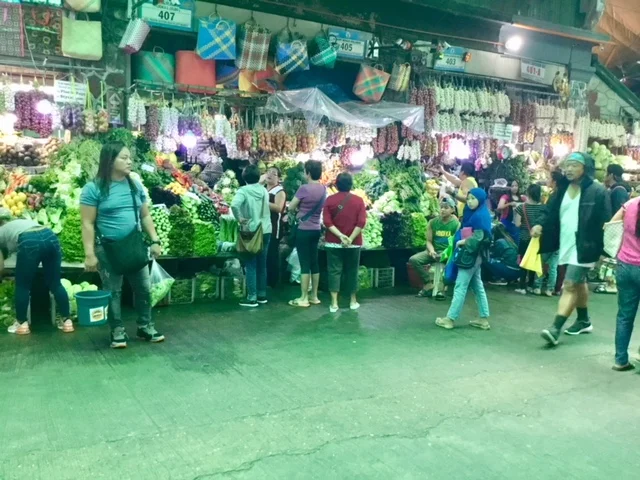Holy Week! Baguio’s Still Worth Your While
/In Baguio, the white SUV-type taxis rule! (Photo by Rene Astudillo)
So what could be more exciting than to travel to the Summer Capital of the Philippines where the week’s weather forecast averages in the mid 60’s?
Baguio City, despite experiencing its share of overcrowding, traffic, socio-economic and environmental challenges in recent years, remains to be a favorite destination for local tourists.
This year is no exception. Local officials expect some 100,000 visitors to spend their vacation week in Baguio. That’s 100,000 on top of the city’s estimated 350,000 population (Baguio was originally designed for a maximum population of 30,000 — and as an R&R destination for U.S. military personnel stationed in the Philippines during America’s occupation of the islands.)
View of Baguio from Porta Vaga Mall (Photo by Rene Astudillo)
The ease of traveling to Baguio has improved significantly over the years, thanks to road infrastructure like the North Luzon Expressway (NLEX) and the Tarlac-Pangasinan-La Union Expressway (TPLEX) that has cut non-stop travel time between Manila and Baguio to just four hours.
What used to be the Baguio Domestic Airport has been closed to commercial flights because of, among other reasons, low demand, so the only way to get to and from the city, absent private vehicles, is via public transportation, which is aplenty. Big and small bus companies operate on a 24-hour bus schedule with some, like Victory Liner and Joy Bus, offering non-stop deluxe air-conditioned buses complete with bus stewardess, free WiFi, lavatory on board, movies and snacks.
From the south, road access to Baguio is mainly through the major winding highways, Marcos Highway and Naguilian Road. The scenic zig-zag Kennon Road (which puts San Francisco’s famed “crookedest street” to shame) has recently been closed to two-way traffic due to landslides and weather-related road damage. However, it has been temporarily re-opened to light vehicles to accommodate the expected Holy Week trek to Baguio.
While hotel accommodations are hard to come by during Holy week and other tourist seasons in Baguio such as the annual Panagbenga Festival in February, which attracts up to two million visitors, transient accommodations in private residences have become a viable alternative (price range of US $20 to $100 a night). Many tourists who travel to Baguio via private vans have all but used their vehicles as their hotel alternative. The city also has designated areas, including Burnham Park, as camping/tent sites that offer shower and toilet facilities.
There are many reasons to enjoy a Holy Week vacation in Baguio.
For those who are faithful to religious tradition, the famed Baguio Cathedral would help fulfill their Lenten obligations while having the opportunity for a selfie in front of the Philippines’ version of Paris’ Notre Dame Cathedral. Its all-day Sunday services are every hour on the hour. There’s also that unique monastery experience visiting the Pink Sisters’ convent and chapel. Then there’s the Lourdes’ Grotto and other local churches that provide many options for the tradition of bisita iglesia, where devotees visit as many churches as they can during Holy Week.
Baguio Cathedral (Photo by Rene Astudillo)
The experiences of Baguio make the trip to this mountain resort worthwhile. The city boasts of one of the most unique public markets in the country, where one can find almost everything imaginable— from the freshest of fruit and vegetable produce to the widest selection of pasalubong ranging from nuts and jams to cookies and locally-grown spices, not to mention baskets, woodcarvings and yes, brooms. Increased prices become noticeable during the Holy Week and other tourist peak seasons, but they’re still much cheaper than Manila’s and other areas.
Baguio City Public Market (Photo by Rene Astudillo)
Then there’s the night market along the entire stretch of the thoroughfare adjacent to Burnham Park, which transforms each night into a haven for bargain seekers and food enthusiasts.
For first-time visitors, there’s always the obligatory paddle boat ride at Burnham Lake, horseback riding at Wright Park, photo ops at Mines View Park and Presidential Mansion House, a visit to Easter Weaving School, or even a short side trip to La Trinidad’s strawberry and vegetable farms, or the Brazilian Favela-style painted houses.
Burnham Park (Photo by Rene Astudillo)
And if you’re into food trips, there are unlimited options ranging from home-cooked style local food (think bulalo, kilawing kambing, inihaw na baboy) at Slaughter House to traditional Chinese cuisine along Session Road, or the more upscale and gourmet places in Camp John Hay, Baguio Country Club and other areas within short driving distance. If all else fails, there’s always the food court and fast-food restaurants at SM Baguio Mall, which has literally become the center of all activity among residents and visitors alike.
Kudos to the city government and private entrepreneurs, water supply has improved over the decades, with hotels, homes and apartments having their own water tanks, and commercial trucks delivering deep-well water to clients at P30 (about US $0.50) per drum.
So, despite the evident “deterioration” of Baguio’s nostalgic pine-scented, quiet and stress-free atmosphere, the city still beckons. It doesn’t care how you get here, just get there if you can.
Oh, but please be reminded: No cussing or smoking in public. It’s the law in the city!
Rene Astudillo is a writer, book author and blogger and has recently retired from more than two decades of nonprofit community work in the Bay Area. He spends his time between California and the Philippines.
More articles from Rene Astudillo







